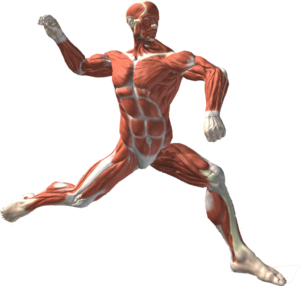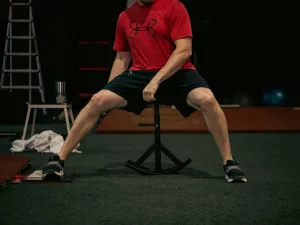Here are some key things to learn when it comes to the difficulties to throw 90 mph.
Pitching is one of the most important aspects of baseball, a beloved pastime in America for more than a century. Elite pitchers are those who can throw at 90 mph or more, and having that talent is highly sought after. But how challenging is it to hurl something 90 mph? Baseball players, coaches, and spectators have been debating this issue for a long time. This article will examine the physics of pitching and the elements that affect a pitcher's maximum throwing speed. We'll also discuss the physical preparation, mental fortitude, and mental toughness needed to throw a fastball that is 90 mph. This article will provide a detailed analysis of what it takes to throw a 90 mph fastball, whether you're a baseball enthusiast, a pitcher looking to elevate your game, or merely interested in sports science.
The Science of Pitching: Exploring the Physics of Throwing a Baseball
 Pitching is a difficult athletic ability that requires a variety of biomechanical and physical elements. The fundamental physics principle of force, which says that the amount of force produced is equal to the product of mass and acceleration, is at the heart of pitching. The objective of pitching is to produce as much power as possible in order to throw the baseball with the most speed possible toward the catcher's glove.
Pitching is a difficult athletic ability that requires a variety of biomechanical and physical elements. The fundamental physics principle of force, which says that the amount of force produced is equal to the product of mass and acceleration, is at the heart of pitching. The objective of pitching is to produce as much power as possible in order to throw the baseball with the most speed possible toward the catcher's glove.
The stride, arm cocking, acceleration, deceleration, and follow-through are the various motions that make up the mechanics of pitching. The pitcher gathers energy while winding up by stepping rearward and rotating the torso. The pitcher starts the arm cocking action during the stride phase and advances while leading with the front foot.
The trunk and throwing arm make an explosive movement during the acceleration period, which is when the pitcher produces the most force to throw the ball toward the plate. In order to slow down the arm and keep it from rotating past its natural range of motion, the pitcher utilizes the opposing muscles during the deceleration period, which is crucial for preventing injury. The throw is finished in the follow-through phase when the pitcher releases the ball toward home plate after landing on the opposing foot.
Understanding the ideal release point, trajectory, and spin of the ball is also part of the physics of pitching. The exact moment the pitcher releases the ball is known as the "release point," and it is very important in determining the pitch's speed and trajectory. The angle of release, speed, and quantity of spin all have an impact on the ball's trajectory. It may be challenging for the batter to make an impact when the ball is moving aggressively due to a high spin rate. For pitchers to perfect their technique and reach maximum velocity while keeping accuracy and control, they must have a solid understanding of pitching physics which you can learn in the 3X Pitching Velocity Program.
Factors that Affect Pitching Speed: Genetics, Mechanics, and Training
 The capacity of a pitcher to throw at high speeds can be impacted by a number of factors. Genetics is one of the most important variables. According to research, a person's physical characteristics, such as height, weight, muscular mass, and bone structure, are significantly influenced by genetics. These elements may have an impact on a pitcher's ability to throw gas. For instance, tall and lean players frequently have longer limbs, which improves pitching velocity and leverage.
The capacity of a pitcher to throw at high speeds can be impacted by a number of factors. Genetics is one of the most important variables. According to research, a person's physical characteristics, such as height, weight, muscular mass, and bone structure, are significantly influenced by genetics. These elements may have an impact on a pitcher's ability to throw gas. For instance, tall and lean players frequently have longer limbs, which improves pitching velocity and leverage.
Pitching mechanics are a key element that influences throwing speed. The sequence of motions and body positions a pitcher employs to produce the most power while reducing the risk of injury are referred to as their pitching mechanics. With the right mechanics, a pitcher can effectively transfer energy from the legs through the trunk to the arm, producing a strong and precise delivery. On the other hand, poor mechanics can result in energy loss and a greater chance of injury.
Pitching ability is also significantly influenced by training. Pitchers can develop the strength, endurance, and flexibility necessary to produce the most force and maintain consistency throughout a game by putting themselves through rigorous training and conditioning programs. Weightlifting, plyometrics, cardio, abdominal strengthening activities, and drills specifically made to enhance pitching mechanics can all be included in a training regimen.
It's important to remember that a pitcher's capacity for high velocity throwing can also be influenced by mental traits like concentration, self-assurance, and attitude. Pitchers are more likely to reach their full potential if they can keep a positive mindset, concentrate on their mechanics, and envision success. To summarize, a pitcher's ability to throw at high speeds can be influenced by a variety of variables, including genetics, mechanics, training, and mental attitude. Pitchers can develop to their full potential and excel in their sport by being aware of and addressing these variables.
Training to Throw 90 mph: Exercises, Nutrition, and Mental Toughness
 Exercise, diet, and mental toughness are all important components of a disciplined, all-encompassing strategy to fastball training. Strength, power, speed, agility, and other physical attributes are all necessary for pitchers to develop. Weightlifting, plyometrics, agility drills, and core strengthening activities can all be used to target these regions.
Exercise, diet, and mental toughness are all important components of a disciplined, all-encompassing strategy to fastball training. Strength, power, speed, agility, and other physical attributes are all necessary for pitchers to develop. Weightlifting, plyometrics, agility drills, and core strengthening activities can all be used to target these regions.
Weightlifting is a crucial part of pitcher preparation because it helps build the muscle mass and power required to produce the most force. Squats and cleans, which target the lower body, are especially crucial for pitchers because they enable them to produce power from their legs. Pitchers can improve their arm strength through upper body workouts like bench press and shoulder press. Arm strength is essential for throwing fast.
Pitching training also requires proper nutrition because it gives the body the energy and nutrients it needs to grow and repair muscle. A balanced diet for pitchers must contain a variety of fruits, veggies, lean proteins, complex carbohydrates, and healthy fats. In order to maintain proper levels of hydration, pitchers must consume plenty of water. You can learn all of this in the Topvelocity Nutritional Program.
Another essential component of pitcher preparation is mental toughness. Pitchers must have the ability to maintain concentration and composure under duress because pitching can be a mentally taxing and stressful activity. Pitchers can stay calm and focused during games by using breathing exercises, meditation, and visualization methods. Pitchers must also adopt a positive outlook and be prepared to work hard and practice in order to succeed.
In conclusion, training to throw a 90 mph fastball takes a combination of exercises, nutrition, and mental toughness. Through targeted exercises and weightlifting, pitchers need to build a variety of physical skills, including strength, power, speed, and agility. To give their bodies the fuel and nutrients they require, they also need to eat a balanced diet and remain hydrated. In order to thrive in their sport, pitchers must also cultivate a positive attitude, remain focused, and keep mental toughness.
3X Pitching Velocity Program is the Key to Throw 90mph
 The 3X Pitching Velocity Program will help you reach your objective of throwing a 90 mph fastball if you're a pitcher looking to up your game. Pitchers can improve their strength, power, and throwing mechanics with the aid of this extensive training regimen.
The 3X Pitching Velocity Program will help you reach your objective of throwing a 90 mph fastball if you're a pitcher looking to up your game. Pitchers can improve their strength, power, and throwing mechanics with the aid of this extensive training regimen.
In order to help pitchers build explosive power and velocity, the 3X Pitching Velocity Program takes a novel approach that combines strength training, plyometrics, mobility drills, and pitching drills. The program also places a strong emphasis on correct mechanics, which can reduce injury risk and maintain accuracy and control for pitchers.
The fact that the 3X Pitching Velocity Program is founded on scientific research and has a successful track record is one of its most important benefits. Following the program has resulted in substantial velocity improvements for pitchers, with some reaching speeds up to 10 mph higher than their prior best.
Take advantage of the chance to improve your throwing; don't pass it up. The 3X Pitching Velocity Program is the way to go if you're serious about tossing a 90 mph fastball. For more information and to get started on your path to becoming a top hurler, visit the program's website right away.




